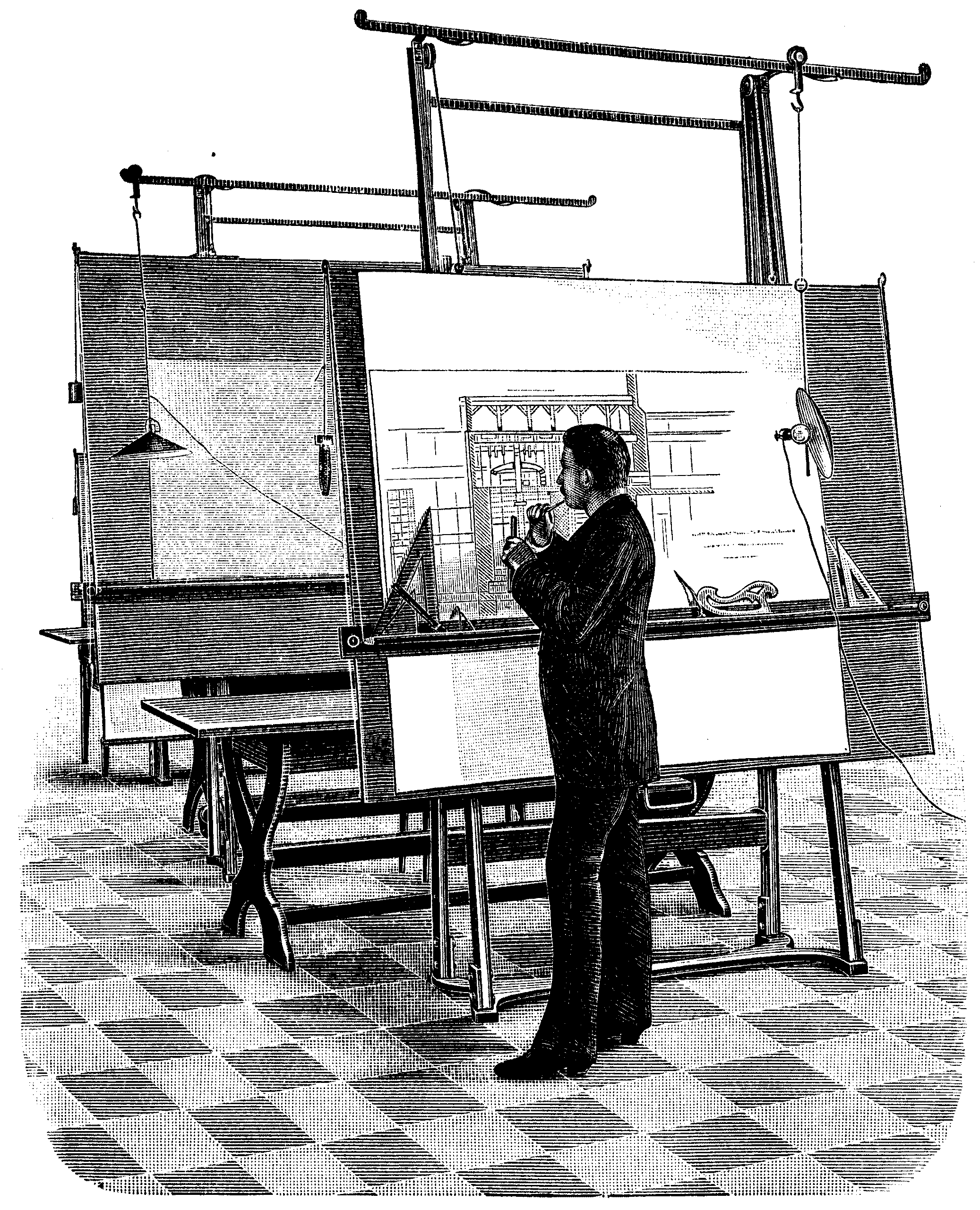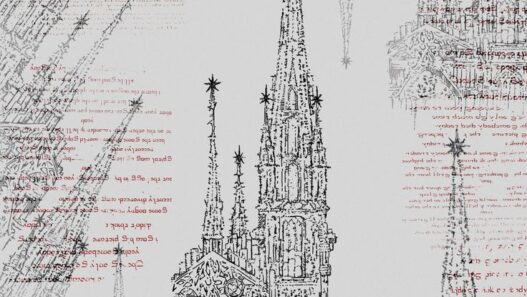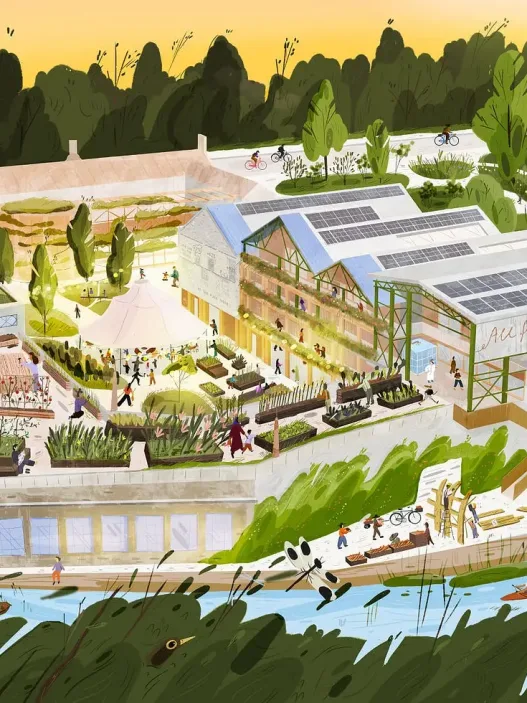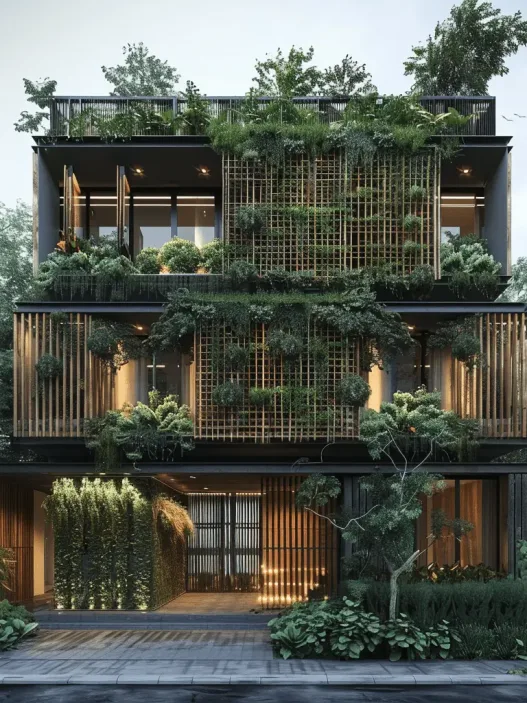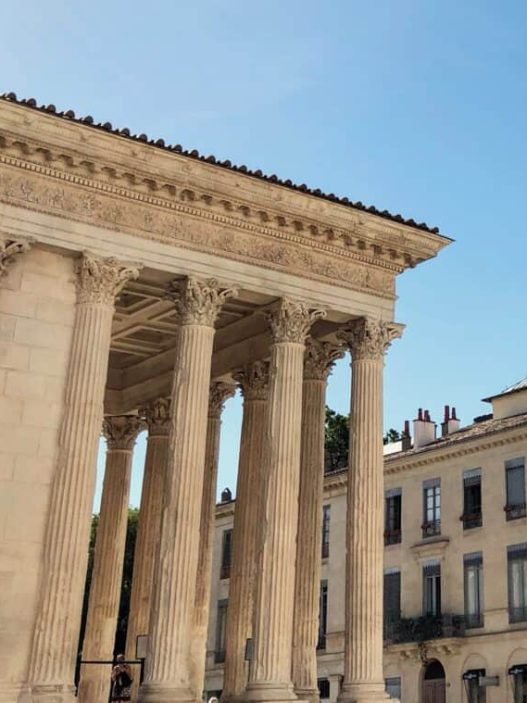Artistic freedom in architecture refers to the ability of architects to express their creativity without being overly constrained by practical concerns. This freedom is necessary to push the boundaries of what buildings can be, to transform them from mere structures into expressions of identity, culture and innovation. Architects often see themselves as storytellers, using spaces to convey narratives and emotions. But this artistic pursuit often has to contend with practical limitations such as budget, regulations and the need for functionality.
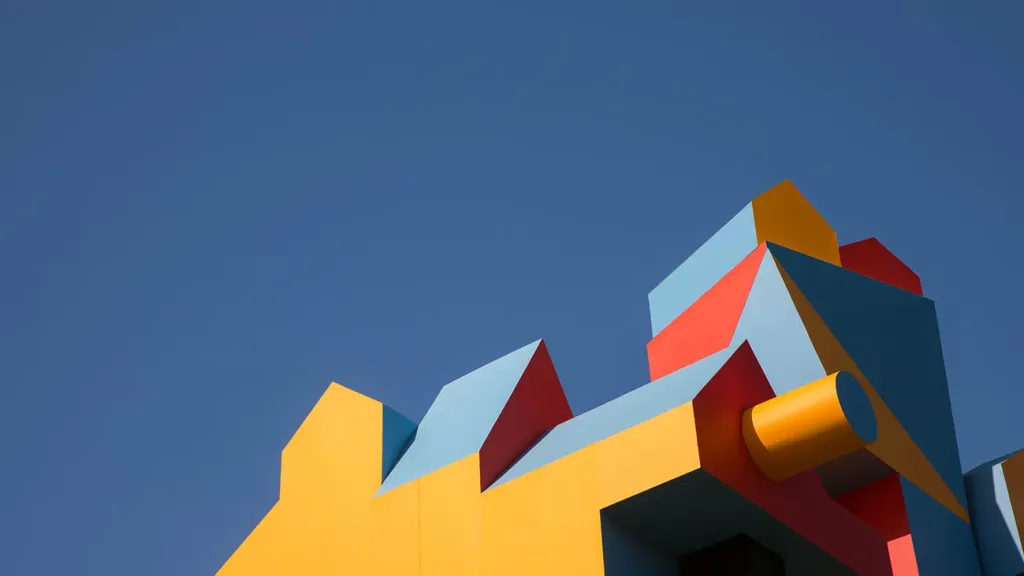
The tension between artistic vision and practical necessity is a recurring theme in architectural discourse. Architects must constantly evaluate how their designs can fulfil both aesthetic desires and the daily needs of the people who will inhabit these spaces. This ongoing negotiation shapes the evolution of architectural styles and practices, making the space both challenging and rewarding.
Innovative Use of Materials
One of the most exciting aspects of architectural design is the innovative use of materials. Architects often experiment with unusual materials to create unique structures that captivate the imagination. For example, the use of sustainable materials such as bamboo or recycled metals not only enhances aesthetic appeal, but also addresses environmental concerns. The Eden Project in the UK is a prime example of how architects can use materials creatively; its geodesic domes made from hexagonal and pentagonal panels serve both a functional purpose and a visually striking form.
Furthermore, advances in technology have introduced new materials that allow for greater flexibility and creativity. Transparent concrete, self-healing materials and 3D printed components are just a few examples of how architects can innovate while maintaining functional integrity. These materials enable the creation of structures that are not only beautiful, but also sustainable and durable.
Unique Aesthetic Choices
Architects often make bold aesthetic choices that reflect their vision and the cultural context of the project. These decisions can range from the overall form of a building to the details of its facade. The Guggenheim Museum in Bilbao, designed by Frank Gehry, is an example of how unique aesthetic choices can redefine the urban landscape. Its rotating, organic shapes challenge traditional architectural norms and make it an iconic symbol of contemporary architecture.
This unique aesthetic is not just for show; it can also enhance the experience of space. The interplay of light and shadow, the flow of movement within a building, and the visual connections between indoors and outdoors all contribute to how people perceive and interact with their surroundings. Ultimately, unique aesthetic choices can create a deeper connection between individuals and the spaces they inhabit.
Sculptural Elements
Sculptural elements in architecture elevate buildings from functional structures to works of art. These elements can include everything from intricate facades to bold structural forms that defy conventional expectations. The Sydney Opera House, with its sail-like shells, exemplifies how sculptural design can become a defining feature of a city. This architectural marvel not only serves its practical purpose as a performance venue, but also stands as an iconic symbol of Australia.
The incorporation of sculptural elements can also enrich the urban environment, providing focal points that attract visitors and enhance the overall aesthetic of a neighbourhood. However, this artistic beauty often comes with practical challenges such as structural integrity and cost. Architects must carefully balance these sculptural ambitions with the realities of construction and engineering.
Expression of Cultural Identity
Architecture is a powerful tool for expressing cultural identity. Buildings often reflect the values, traditions and history of the communities they serve. For example, the use of traditional materials and techniques in vernacular architecture can create a sense of place and heritage. In the American Southwest, adobe structures not only serve as functional homes, but also reflect the cultural identity of the Native American tribes living in the region.
In contemporary architecture, this expression of identity can manifest in a variety of ways, such as incorporating local art, using traditional design elements, or responding to the landscape. The National Museum of African American History and Culture in Washington, D.C., designed by David Adjaye, embodies this spirit. Its design incorporates elements from African-American culture, making it a poignant symbol of history and identity.
Influence of Artistic Movements
Throughout history, artistic movements have profoundly influenced architectural styles and practices. The Renaissance, for example, signalled a revival of classical principles, leading to buildings that emphasised symmetry, proportion and harmony. In contrast, the Modernist movement emphasised minimalism and function over ornamentation, encouraging architects to eliminate unnecessary elements.
Today, we see the influence of various artistic movements in contemporary architecture as designers draw inspiration from different sources. With its fragmented forms and dynamic shapes, the Deconstructivist movement challenges traditional architectural conventions, encouraging a more fluid interpretation of space. This fluidity often leads to innovative designs that reflect the complexity of modern life.
Consequently, the struggle between artistic freedom and practicality in architecture is an ongoing dialogue that shapes the built environment. While artistic expression is vital for creating memorable and meaningful spaces, it must coexist with the practical realities of construction and functionality. This dynamic interaction ultimately enriches the field of architecture and leads to designs that are not only visually engaging, but also serve the needs of the communities in which they live.
Architecture is a unique discipline that balances creativity and functionality. Architects often find themselves in a tug-of-war between their artistic vision and the practical realities of construction. This challenge is manifested in various dimensions, where the desire to create striking and innovative structures has to contend with fundamental considerations such as security, budget and environmental impact.
Practical considerations
When architects set out to design a new building, they are immediately confronted with a number of practical considerations that can shape and even constrain their artistic expression. These considerations ensure that a building is not only aesthetically pleasing, but also safe, functional and sustainable.
Structural Integrity
One of the foremost concerns in architecture is structural integrity. Every building must be designed to withstand a variety of forces, including gravity, wind and seismic activity. This often means that architects must adhere to certain engineering principles and use materials that can effectively carry the loads. For example, the iconic Sydney Opera House, famous for its sail-like design, required innovative engineering solutions to ensure that its unique shape could withstand environmental pressures. Although architects dream of soaring forms and unconventional designs, the reality of structural integrity often requires compromises that can temper their artistic aspirations.
Functionality of Spaces
Functionality is another critical aspect of architectural design. Whether a building is a home, office or public space, it must serve its purpose. This requires careful planning of how the spaces will be used and how people will move through them. Consider a hospital, for example. An architect should not only design an aesthetically appealing facade, but also ensure that the layout facilitates efficient workflows for staff and comfort for patients. The balance between innovative design and practical use can lead to creative solutions, such as integrating natural light into patient rooms while maintaining a calming atmosphere.
Cost and Budget Constraints
Budgetary constraints often impose limits on the scope of artistic expression. Architects have to work within financial parameters that may restrict the materials they use, the complexity of the design and the overall scale of the project. For example, a community centre may have a tight budget, prompting the architect to explore cost-effective materials and simpler forms that still provide a sense of welcome and community spirit. This requirement can lead to creative problem solving where architects find innovative ways to provide beauty and utility without overspending.
Building Codes and Regulations
Building codes and regulations are essential to ensure safety and compliance with local laws. Architects must navigate a complex web of regulations that dictate everything from fire safety to accessibility. These rules are in place to protect building occupants and ensure the longevity of structures. However, they can also act as barriers to artistic expression. For example, an architect may design a striking, open-concept design, only to realise that regulations require certain walls to be load-bearing or that certain fire exits must be included, ultimately altering the original vision. Overcoming these constraints often requires creativity, as architects must find ways to meet legal demands while pursuing their artistic goals.
Environmental Sustainability
In recent years, environmental sustainability has become a very important issue in architecture. The pressure towards environmentally friendly design has prompted architects to rethink their approach. Sustainable architecture focuses on minimising environmental impact, using renewable resources and creating energy-efficient buildings. For example, the Bullitt Centre in Seattle is often cited as one of the world’s greenest commercial buildings. Its design, which incorporates solar panels, rainwater harvesting and natural ventilation, demonstrates how practicality and sustainability can enhance a building’s aesthetic appeal. Balancing artistic vision with sustainable practices can lead to innovative designs that not only satisfy aesthetic desires but also contribute positively to the environment.
In summary, the struggle between artistic freedom and practicality in architecture is a dynamic interaction that shapes how buildings are designed and constructed. By navigating between structural integrity, functionality, budgetary constraints, building codes and sustainability, architects can create spaces that are not only beautiful, but also serve the needs of their users and the environment. This ongoing dialogue between art and practicality continues to evolve, pushing the boundaries of what architecture can achieve.
Architecture is a fascinating blend of art and science. On the one hand, it allows architects to express their creativity, push boundaries and create aesthetically pleasing designs. On the other hand, buildings must also serve practical purposes, meeting the needs of the occupants while adhering to safety regulations and budgetary constraints. This delicate balance between artistic freedom and practicality has led to both notable successes and notable failures in the field of architecture.
Examples of Compromise
Studying real-world examples helps to illustrate the ongoing struggle between artistic vision and practical necessity. Throughout history, architects have faced challenges that have forced them to negotiate the terms of their designs. These case studies illustrate how compromise can lead to innovative solutions or, conversely, highlight the pitfalls that can arise when artistic ambition trumps practical concerns.
Successful Integrations
A shining example of successful integration is the Sydney Opera House in Australia. Designed by Jørn Utzon, the building’s iconic sail-like roofs exemplify artistic ambition. However, the project faced numerous challenges, including budget overruns and construction delays. Ultimately, the integration of Utzon’s creative vision with practical construction techniques resulted in a landmark that serves as both a performance venue and a symbol of Sydney. The design of the Opera House not only reflects artistic expression, but also meets the functional needs of a busy cultural centre.
Another noteworthy example is the High Line in New York. Originally an abandoned elevated railway, the transformation of the High Line into a public park exemplified the successful fusion of art and practicality. The designers utilised the existing structure while preserving its historic elements, creating a lush green space and public spaces. This project not only revitalised a forgotten area, but also offered New Yorkers a unique urban oasis, successfully combining artistic landscape design with the practical need for green space in a densely populated city.
Notable Failures
But not all projects achieve this harmony. The Guggenheim Museum Bilbao, designed by Frank Gehry, is famous for its bold, sculptural form. However, the initial vision faced significant criticism for its functionality. Visitors often found the layout of the museum confusing, leading to a disconnect between the artistic presentation and the practical experience of navigating the space. This highlights how an excessive focus on aesthetics can sometimes negatively impact the user experience and demonstrates the importance of considering practicality in design from the outset.
Another example is the famous Leaning Tower of Pisa. Although it stands as an iconic symbol of architectural beauty, its undesirable tilt reveals a dramatic failure of practicality. The tower’s design was compromised by inadequate foundation planning, leading to structural instability. This case is a reminder that artistic ambitions must be grounded in sound engineering practices to avoid long-term consequences.
Lessons learnt
Several lessons emerge from these case studies about the relationship between artistic freedom and practicality. First, collaboration between architects, engineers and clients is essential. Open dialogue ensures that creative visions are aligned with functional requirements, encouraging designs that are both beautiful and usable. Second, iterative design processes can help balance aesthetics and practicality. By testing ideas and incorporating feedback, architects can refine their vision to better meet the needs of end users.
Moreover, embracing the constraints of a project can inspire creativity. Budget or space constraints can lead to innovative solutions that may not have emerged in a more open-ended design process. Ultimately, the most successful architectural projects are those that respect both artistic expression and practical demands, creating spaces that resonate with their users.
Interviews with Architects
To better understand this challenge, interviews with architects reveal their personal experiences and philosophies. Many architects emphasise the importance of grounding creative visions in the user experience. For example, one architect shared that they often hold workshops with future building occupants to understand their needs, to ensure that the final design reflects both artistic goals and practical realities.
Others emphasise the role of sustainability in this conversation. As environmental concerns grow, architects are increasingly exploring how to integrate green design principles into their work without compromising their artistic flair. By prioritising environmentally friendly materials and energy-efficient systems, they not only increase practicality, but also create a narrative that enriches the overall design.
Comparative Analysis of Designs
A comparative analysis of different architectural styles reveals even more clearly the balance between artistic freedom and practicality. Modern architecture often reflects a practical approach that emphasises functionality by prioritising clean lines and minimalism. However, this can sometimes lead to sterile environments that lack emotional resonance.
In contrast, traditional architecture often celebrates artistic expression by embracing intricate details and ornamentation. Yet these designs can face challenges in terms of energy efficiency and adaptability to modern needs. By analysing the various styles, we can see how different approaches to architecture navigate the delicate dance between art and practicality, each with its own advantages and disadvantages.
In conclusion, the struggle between artistic freedom and practicality in architecture is a dynamic and evolving debate. Through case studies, interviews and comparative analyses, we reveal the complexity of this relationship and the valuable lessons it teaches. The most effective designs emerge from a thoughtful interplay of creativity and pragmatism, resulting in spaces that not only inspire but also effectively serve the needs of their users.
# The Struggle Between Artistic Freedom and Practicality in Architecture
Architecture is a fascinating blend of art and science, where creativity meets functionality. This interaction often leads to a struggle between artistic freedom and the practical needs of a project. While architects aspire to create visually striking structures, they must also consider factors such as cost, safety, sustainability and the needs of the building’s occupants. This balance is crucial in shaping the built environment and affects not only individual buildings but also the overall architectural landscape. In examining this topic, we will explore how this challenge affects future architectural trends, focusing on emerging design philosophies, technological advances, changing client expectations, global movements and their impact on education and training.
Impact on Future Architectural Trends
The ongoing tension between artistic expression and practical necessity is significantly shaping the future of architecture. As designers grapple with this dilemma, new trends are emerging that reflect an evolving understanding of what architecture can and should be. This influence manifests itself in a variety of ways, from the rise of sustainable practices to the integration of smart technology into buildings.
Architects are becoming increasingly aware of their social responsibility. They strive to create spaces that are not only aesthetically pleasing, but also environmentally sensitive. This shift has led to a growing trend towards green architecture, where the focus is on energy efficiency, sustainable materials and minimal environmental impact. As a result, future architectural trends will likely place even greater emphasis on the harmonisation of artistic vision with ecological practicality.
Emerging Design Philosophies
As the dialogue between art and practicality continues, new design philosophies are emerging that challenge traditional boundaries. One such philosophy is biophilic design, which aims to connect people with nature through architecture. By prioritising natural light, greenery and organic materials, this approach creates spaces that enhance well-being while maintaining functionality.
Another notable philosophy is adaptive reuse. This concept involves redesigning old buildings for new uses and combining historic preservation with contemporary needs. In this way, architects can create unique spaces that reflect both the past and the future. These emerging philosophies show how architects find innovative solutions that honour their creative impulses while addressing practical concerns.
Technological Developments
Technological advances are at the forefront of the struggle between artistic freedom and practicality. The rise of computer-aided design (CAD) and Building Information Modelling (BIM) has transformed the way architects visualise and plan their projects. These tools enable more precise modelling of structural elements, allowing architects to push their creative boundaries while ensuring designs remain feasible and safe.
What’s more, new materials and construction techniques allow for more experimentation. Innovations such as 3D printing and modular construction not only speed up the building process, but also enable architects to explore unique forms and designs that were once considered impractical. As technology continues to evolve, it will provide architects with even more tools to balance their artistic vision with the realities of construction.
Changing Client Expectations
Customer expectations are also changing, affecting the balance between artistry and practicality. Today’s clients are increasingly savvy and demand more than just functional spaces. They are looking for designs that reflect their values and aspirations, and this is pushing architects to be more innovative.
This shift requires a deeper understanding of various factors such as cultural contexts and community needs. Architects must fulfil these expectations while ensuring that their designs are practical and sustainable. As clients demand more personalised and meaningful spaces, the challenge for architects is to maintain their creative integrity while meeting these growing expectations.
Global Architectural Trends
The struggle between artistic freedom and practicality is not confined to any one place; it resonates in global architectural movements. For example, the contemporary architectural movement embraces minimalism, focusing on clean lines and functional spaces. However, this simplicity often hides a deeper complexity, as architects strive to create effective designs that resonate with cultural identities.
In addition, the rise of vernacular architecture emphasises the importance of local traditions and materials. This trend emphasises designs that are not only practical for the environment in which they live, but also celebrate cultural heritage. Such trends show how architects can honour artistic expression while adhering to practical realities.
Influences of Education and Training
The struggle between artistic freedom and practicality has important implications for architectural education and training. Future architects need to be equipped with a range of skills encompassing both creative and technical knowledge. This requires a curriculum that encourages innovation while ensuring a strong understanding of practical constraints.
Furthermore, collaborative projects involving interdisciplinary teams can enhance learning experiences by enabling students to appreciate the multifaceted nature of architecture. By engaging with real-world challenges, future architects can develop the ability to balance artistic vision with the practical needs of their societies.
In conclusion, the struggle between artistic freedom and practicality in architecture is a dynamic and evolving discourse that is shaping the future of the field. Looking ahead, it is clear that finding this balance will continue to inspire creativity, encourage innovation and ultimately lead to more meaningful and sustainable architectural solutions.
Architecture is a unique blend of art and science, where creativity meets functionality. This dynamic interaction reflects the aspirations of society while addressing practical needs. Architects often find themselves in a delicate balance between expressing artistic vision and meeting the demands of construction, use and sustainability. This struggle is not just theoretical; it is lived in real projects and has profound implications for how we experience our built environment.
Thinking.
Reflecting on the ongoing dialogue between artistic freedom and practicality reveals a rich tapestry of human experience. Architecture is not just a building; it also embodies cultural values, historical narratives and personal stories. When we consider the buildings that define our cities, we realise that their design is a reflection not only of aesthetic preferences, but also of the practical realities of everyday life.
In this context, the conclusion is clear: architectural endeavours must navigate the intersection of innovation and necessity. While the lure of bold, unorthodox designs is tempting, they must also serve the fundamental purposes of shelter, community and sustainability. The ongoing debate about this balance encourages architects to push boundaries while adhering to practicality.
Balancing Art and Function
Balancing art and function is a cornerstone of architectural practice. At its best, architecture serves as a canvas for artistic expression while simultaneously fulfilling essential functions. This balance can be seen in iconic structures around the world. Take the Sydney Opera House, for example. Its striking sails capture the imagination and symbolise artistic aspiration, but it has also been meticulously designed to effectively accommodate performances and large audiences.
The challenge lies in ensuring that artistic choices do not compromise usability. Architects must consider a variety of factors, including the environment, materials and the needs of the building’s occupants. This requires a nuanced understanding of both aesthetic principles and practical constraints. Ultimately, successful architecture harmonises these two elements to create spaces that inspire while remaining functional.
Final Thoughts from Experts
Experts in the field of architecture often emphasise the importance of bridging the gap between artistic expression and practical requirements. Renowned architects such as Frank Gehry and Zaha Hadid have pushed the boundaries of design, creating structures that are visually striking but also serve specific functions. Their work demonstrates that innovative design can enhance the user experience without sacrificing practicality.
In discussions, architects often emphasise the need for collaboration with engineers, developers and the community. This multi-faceted approach provides a more comprehensive understanding of how a design can fulfil artistic aspirations while addressing real-world challenges. The insights gained from these collaborations enrich the architectural process, leading to solutions that resonate on many levels.
Audience Engagement
Involving audiences in this dialogue is crucial. When communities are involved in the design process, the resulting architecture often more accurately reflects their needs and aspirations. Public forums, workshops and interactive design sessions allow different perspectives to influence the outcome. This participatory approach not only democratises architecture, but also strengthens the bond between the built environment and the individuals living in it.
As we navigate the complexities of modern urban life, the voice of the viewer becomes even more critical. From the comfort of their homes to the functionality of public spaces, people are increasingly aware of the impact of architecture on their daily experiences. This awareness increases the demand for designs that prioritise both aesthetic value and practical utility and encourages architects to innovate responsibly.
Future Prospects for Architecture
The future of architecture stands at a fascinating crossroads. As technology advances, new materials and construction methods are emerging, allowing greater creative freedom. Concepts such as 3D printing and sustainable design practices are reshaping the way architects approach their work. This evolution presents an exciting opportunity to explore new forms that remain sensitive to practical needs.
The increasing emphasis on sustainability is redefining the parameters of architectural design. Buildings are now expected to contribute positively to their surroundings, promote energy efficiency and reduce waste. This shift encourages architects to combine artistic vision with ecological responsibility, leading to innovations that are both beautiful and beneficial.
Looking ahead, the challenge will be to maintain this balance while embracing new technologies and ideas. The architectural landscape will continue to evolve, reflecting societal values and aspirations in innovative ways.




